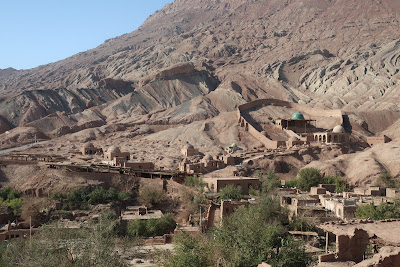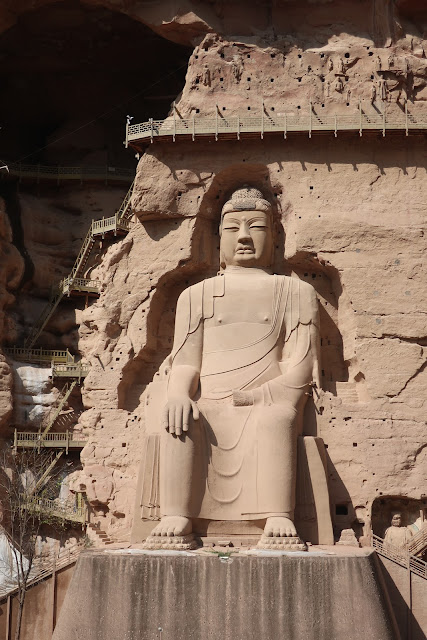Friday, 9 November 2018
Xinjiang - Kashgar
Posted by
O Coxo
at
23:18
0
comments
![]()
Thursday, 8 November 2018
Wednesday, 7 November 2018
Xinjiang - Tuyuk
Posted by
O Coxo
at
22:37
0
comments
![]()
Tuesday, 6 November 2018
Gansu - Crescent Lake - Dunhuang
You will find mentions to Dunhuang in any silk road history book. It was a major stop on the ancient Silk Road. This ancient oasis city has a relaxed atmosphere and a pleasant city centre with a lively crafts market. The two main attractions in the region are the Moggao Caves and the Crescent Lake.
Similar to Zhangye Daxia, it is now an attraction park. Buses packed of tourists arrive at the dozens every day. Camel caravans loaded with excited tourists (their legs equipped with gaiters to protect them from the discomfort of the sand) wonder around the dunes, young couples pose for selfies in front of the postcard-like monastery, families rent sleighs and glide down the impressive 200m high sandunes... Again, something out of a strange, quirky dream, but still uniquely beautiful and totally worth the visit.
Small note to say that the high speed train does not go to Dunhuang. You need to travel to Liuyuan South, which is northeast of Dunhuang, and catch a taxi from there to Dunhuang. Taxis are waiting at the train station.
Posted by
O Coxo
at
22:40
1 comments
![]()
Gansu - Jiayuguan
Posted by
O Coxo
at
22:39
0
comments
![]()
Gansu - Zhangye Daxia
Posted by
O Coxo
at
22:38
0
comments
![]()
Gansu - Mati Si
Posted by
O Coxo
at
22:37
0
comments
![]()
Gansu - Bingling Si
Posted by
O Coxo
at
22:36
0
comments
![]()
Trekking day 8: Zaouiat Oulmzi to Tabant
Posted by
O Coxo
at
22:35
0
comments
![]()
Trekking day 7: Zaouiat Ahansal to Zaouiat Oulmzi
Posted by
O Coxo
at
22:34
0
comments
![]()
Trekking day 6: Zaouiat Ahansal, Taghia
Posted by
O Coxo
at
22:33
0
comments
![]()
Trekking day 5: Taguertoucht to Zaouiat Ahansal
Posted by
O Coxo
at
22:32
0
comments
![]()
Trekking day 4: Batli to Taguertoucht
Posted by
O Coxo
at
22:32
0
comments
![]()
Trekking day 3: Toussefsedi to Batli part 2
Posted by
O Coxo
at
22:30
0
comments
![]()
Trekking day 2: Toussefsedi to Batli part 1
Posted by
O Coxo
at
22:29
0
comments
![]()
Trekking day 1: Ilmilchil to Toussefsedi
Posted by
O Coxo
at
22:27
0
comments
![]()








































